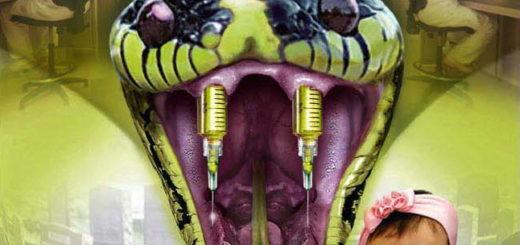How to Diagnose and Treat Thyroid Disease
Visit the Mercola Video Library
By Dr. Mercola
Thyroid disease has become very prevalent in today’s world, courtesy of a number of different lifestyle factors. An estimated 1 in 8 women aged 35 to 65 has some form of thyroid disease1 — underactive thyroid being the most common.
More than one-quarter of women in perimenopause are diagnosed with hypothyroidism, in which insufficient amounts of thyroid hormones are produced.
Thyroid hormones2 are used by every cell of your body, which is why the symptoms can vary so widely. For example, thyroid hormones regulate metabolism and body weight by controlling the burning of fat for energy and heat.
Thyroid hormones are also required for growth and development in children. They signal the production of virtually all growth factors in your body, including:
- Somatomedins (skeletal tissue growth)
- Erythropoietin (involved in the development of red blood cells)
- Nerve growth factor
- Epidermal growth factor
In pregnant women, thyroid hormone is also involved in the production of prolactin, a hormone responsible for milk production.
Poor thyroid function has been linked to a wide array of serious health conditions,3 from fibromyalgia and irritable bowel syndrome, to infertility, autoimmune diseases, and thyroid cancer.4
This is why it’s so important to understand how your thyroid works and what can cause it to dysfunction.
Understanding How Your Thyroid Gland Works
The thyroid gland is a butterfly-shaped gland found inside your neck, right under your larynx or voice box. A two-inch long, highly vascular gland, it has two lobes located on each side of the windpipe, connected by a tissue called the isthmus.
Your thyroid is responsible for producing the master metabolism hormones that affect virtually every function in your body. It produces three types of hormones:
- Triiodothyronine (T3)
- Thyroxine (T4)
- Diiodothyronine (T2)
Hormones secreted by your thyroid interact with all your other hormones, including insulin, cortisol, and sex hormones like estrogen, progesterone, and testosterone.
The fact that these hormones are all tied together and are in constant communication explains why a less-than-optimal thyroid status is associated with so many widespread symptoms and diseases.
Almost 90 percent of the hormone produced by your thyroid is in the form of T4, the inactive form. Your liver then converts the T4 into T3, the active form, with the help of an enzyme.
T2 is currently the least-understood component of thyroid function and the subject of a number of ongoing studies.
If everything is working properly, you will make what you need and have the correct amounts of T3 and T4, which control the metabolism of every cell in your body.
If your T3 is inadequate, either by scarce production or not converting properly from T4, your entire body will experience the consequences.
Thyroid Disruptors Abound…
It’s important to realize that thyroid dysfunction is a complex issue with many variables and many potential underlying causes, including the following.
If your thyroid dysfunction is caused by factors such as these, detoxification and changing your lifestyle to avoid hormone disrupting chemicals may be key components of successful intervention.
Estrogen dominance Midlife hypothyroidism can be related to underlying estrogen dominance,5 in which case taking thyroid hormone fails to address the root of the problem. Medications Certain medications, such as steroids, barbiturates, cholesterol–lowering drugs, and beta blockers can disrupt your thyroid function, in which case the most appropriate remedy may not be to add thyroid hormone. Endocrine-disrupting chemicals Endocrine-disrupting chemicals like mercury, lead, phthalates, and bisphenol-A (BPA) have been linked to both early menopause and thyroid problems.6 Bromine exposure Bromines found in pesticides, plastics, bakery goods, beverages containing brominated vegetable oils (BVOs), and flame retardants also have a disruptive effect on thyroid function. Bromine, chlorine, and fluoride are all in the same family as iodine, and all three can therefore displace iodine in your thyroid gland.
Fluoride Fluoride, which is still routinely added to water supplies in many areas across the US, was used in Europe to reduce thyroid activity in hyperthyroid patients as late as the 1970s. According to a 2006 report by the National Research Council of the National Academies,7 fluoride is “an endocrine disruptor in the broad sense of altering normal endocrine function.”
This altered function can involve your thyroid, parathyroid, and pineal glands, as well as your adrenals, pancreas, and pituitary.
Altered thyroid function is associated with fluoride intakes as low as 0.05 to 0.1 mg fluoride per kilogram body weight per day (mg/kg/day), or 0.03 mg/kg/day with iodine deficiency.8
Fluoride has the ability to:
- Mimic thyroid-stimulating hormone (TSH)
- Damage the cells of your thyroid gland
- Disrupt conversion from the inactive form of the thyroid hormone (T4) to the active form (T3)
Heavy metals Heavy metal toxicity is yet another factor that can be part of the problem.
Symptoms of Underactive Thyroid
Symptoms of hypothyroidism (underactive thyroid) may include but are not limited to the following:
Fatigue, loss of energy, and general lethargy Cold intolerance Muscle and/or joint pain Decreased sweating Depression Puffiness Weight gain Coarse or dry skin and hair Hair loss Sleep apnea Carpal tunnel syndrome Forgetfulness, impaired memory, and inability to concentrate Decreased hearing Bradycardia (reduced heart rate) Menstrual disturbances Decreased appetite Impaired fertility Constipation Fullness in the throat, hoarseness Increased risk of heart disease Increased “bad” cholesterol (LDL) Weakness in extremities Emotional instability Blurred vision Mental Impairment
Standard Thyroid Test Misdiagnoses Many
The most common way to diagnose thyroid dysfunction is by measuring how much thyroid-stimulating hormone (TSH) your pituitary gland excretes. When your thyroid is not producing sufficient levels of thyroid hormone, your pituitary sends out TSH to encourage the thyroid to increase production.
Hence the higher your TSH level is, the more likely you are to have hypothyroidism. However, while the TSH test has become the gold standard for determining the activity level of your thyroid, this test may not be entirely adequate.
According to Dr. Raphael Kellman, an integrative medicine practitioner in New York City who specializes in thyroid disorders, many patients whose TSH level falls within the accepted “normal” range still exhibit classic symptoms of low thyroid. As noted in a recent Epoch Times article,9 the TSH test “frequently misrepresents what is happening in the thyroid and the pituitary.”
Part of the problem is that the TSH test fails to reveal the influence of endocrine disrupting chemicals, which can wreak absolute havoc on your hormone function.
As noted in the featured article:
“In order to detect a thyroid problem, a TSH test must assume that hormonal signaling in the rest of the system is functioning normally. Because endocrine disrupting chemicals may disrupt many points along the signaling system and not just the thyroid, it can be difficult to identify an imbalance with a TSH test alone. Kellman says this is a big reason why the conventional blood tests and reference ranges used to detect a thyroid abnormality can overlook real problems.
‘We have to realize that when it comes to endocrine disruptors the blood test can be elusive. It doesn’t show up as definitively as when you see the effects of the autoimmune process,’ he said. ‘It may not be as evident on blood testing. And blood tests can even look contradictory.'”
The Case for TRH and Reverse T3 Testing
In cases where TSH is within normal range yet symptoms of low thyroid are still present, a thyrotropin-releasing hormone (TRH) stimulation test may offer additional clues. It involves getting an injection of thyrotropin (which is produced by your hypothalamus gland), in response to which your pituitary gland dumps all of its stored TSH into your bloodstream.
The TRH test basically tells you how much TSH your pituitary contains, in total, opposed to how much TSH it is sending out in any given moment. Having plenty of TSH stored in your pituitary yet showing normal levels on the TSH test is suggestive of a dysfunction in your pituitary gland, and underlying toxicity may be part of the problem. As noted by Dr. Kellman:
“Toxins don’t have to reach high levels in order to affect a delicate system that’s very, very vulnerable to toxicity. Especially the thyroid which I think is the most vulnerable component of the endocrine system.”
Dr. Jonathan Wright, pioneer in natural medicine, has also noted that elevated reverse T310 (RT3) levels tend to signal the presence of toxic metals. In his experience, most people who have elevated RT3 levels will see their levels revert back to normal after undergoing chelation with EDTA and DMPS, which draw out cadmium, lead, mercury, and other toxic metals. In essence, heavy metal toxicity can cause a functional form of hypothyroidism. As previously explained by Dr. Wright:
“It’s very well-known that lead and cadmium interfere with testosterone production. What’s not so well-known is that reverse T3 is stimulated by toxic metals, so up it goes. In effect, we can have levels that are so high, they way outnumber the regular T3. You’re functionally hypothyroid even if your TSHs and free T3s happen to be normal.”
Lab Tests to Assess Thyroid Function
To get a fuller picture of your thyroid health, I recommend using the following laboratory tests:
TSH Test The higher your level of TSH, the higher the likelihood that you have hypothyroidism. The ideal level for TSH is between 1 and 1.5 milli-international units per liter. Free T4 and Free T3 The normal level of free T4 is between 0.9 and 1.8 nanograms per deciliter. T3 should be between 240 and 450 picograms per deciliter. Thyroid Antibody Testing This includes thyroid peroxidase antibodies and anti-thyroglobulin antibodies. These two measures help determine if your body is attacking your thyroid or overreacting to its own tissues (i.e., autoimmune reactions). Unfortunately, conventional physicians nearly always leave this test out. If your doctor refuses to include this test, you can get it done yourself through DirectLabs.com. Basal Body Temperature Although there are a few different protocols, the most commonly used is the Broda Barnes system,11 which is a measure of your basal body temperature at rest. TRH Stimulation Test For more difficult cases, TRH can be measured using the TRH stimulation test. TRH helps identify hypothyroidism that’s caused by inadequacy of the pituitary gland. Reverse T3 While reverse T3 (RT3) is metabolically inactive, elevated levels may indicate that heavy metal toxicity is affecting your thyroid function.
Iodine Is Essential for Thyroid Health
Iodine is the key to a healthy thyroid and efficient metabolism. Even the names of the different forms of thyroid hormone reflect the number of iodine molecules attached – T4 has four attached iodine molecules, and T3 (the biologically active form of the hormone) has three – showing what an important part iodine plays in thyroid biochemistry. As your body cannot produce its own iodine, it must be obtained from your diet.
Unfortunately, iodine deficiency is extremely common these days:
- More than 11 percent of all Americans — and more than 15 percent of American women of child-bearing age — have urine iodine levels less than 50 micrograms per liter (mcg/L),12 indicating moderate to severe iodine deficiency
- 36 percent of reproductive-aged women in the US are considered mildly iodine deficient (<100 mcg/L urinary iodine). The American Academy of Pediatrics recommends taking an iodine supplement during pregnancy, as most pregnant women are deficient13
Besides dietary deficiencies, toxins can also affect your iodine levels by displacing iodine. Iodine is a member of a class of related elements called “halogens,” which includes bromine, fluorine, and chlorine. When they are chemically reduced, they become “halides” (iodide, bromide, fluoride, and chloride). Most people today are exposed to these halogens/halides via food, water, medications, and environments, and these elements selectively occupy your iodine receptors, further deepening your iodine deficit.
How Much Iodine Do You Need for Thyroid Health?
In Japan, the daily dose of iodine obtained from the diet averages around 2,000 to 3,000 micrograms (mcg) or 2 to 3 milligrams (mg), and there’s reason to believe this may be a far more adequate amount than the US recommended daily allowance (RDA) of 150 mcg. Some argue for even higher amounts than that, such as Dr. David Brownstein, a physician and author of the book “Iodine: Why You Need It. Why You Can’t Live Without It”, who recommends 12.5 milligrams (mg) on a regular basis.
I believe it would be prudent for most to avoid taking high doses unless you’re using it therapeutically, for a short period of time. There are potentially serious risks to taking too much iodine, which is why I generally do not advise taking large doses of iodine supplements like Lugol’s or Iodora long term.
I personally feel that getting iodine from natural sources is best, but if you do choose supplements, supplementation at a dose of a few mg, might be best for most. Iodine is particularly important for pregnant women, as it plays an important role in your baby’s brain and nervous system development. Research14 suggests having sufficient amounts of iodine during the first months of pregnancy can improve your child’s IQ by nearly 1.25 points.
Good natural sources of iodine include:
- Sea vegetables such as kelp and algae
- Seafood such as shrimp, sardines, Alaskan salmon
- Seaweed called bladderwrack (Latin name: Fucus vesiculosus), which you can also buy in either powdered form or in capsules
Recommended Types of Thyroid Medications
When it comes to thyroid hormone replacement, you have two basic options:
- Bioidentical thyroid hormones — which is what I recommend using — include Nature-Throid and Westhroid. They’re made from desiccated pig thyroid glands and contain the full spectrum of thyroid hormones: T4, T3, T2, and T1.
- Synthetic hormones,15 such as Synthroid (generic brand: Levothyroxine), which contains only T4.
One of the trickiest parts of thyroid hormone replacement is finding the ideal dose. This typically requires fine-tuning over an extended period of time, with regular blood testing to see how the dose is affecting your thyroid hormone levels, and keeping track of your symptoms. Two key signals that you’re taking too much hormone are excessive sweating and rapid heartbeat or heart palpitations. If you get either of those symptoms, you’re getting too much thyroid, and you need to cut back on the dose.
It’s also worth noting that in some cases, if you’re borderline hypothyroid, you may only need an iodine supplement rather than an actual thyroid hormone replacement. Still, even with thyroid medication, some people still don’t see a major improvement in their symptoms, and there may be a number of reasons for this.
Why Is Your Thyroid Medication Not Working?
GreenMedInfo recently addressed this issue, listing several potential reasons why your thyroid medication isn’t providing the relief you expected.16 This includes:
Undiagnosed Hashimoto’s disease — an autoimmune disorder in which your body is attacking your thyroid. As a general rule, signs of Hashimoto’s include TSH above 4.25 and thyroid peroxidase antibody (TPO) above 30. Reduced thyroid receptor sensitivity, typically due to chronic inflammation. Once your thyroid receptor sensitivity is dulled, the amount of thyroid hormone required in order for your body to recognize and use it increases. Poor thyroid hormone conversion. Your body converts inactive T4 to the active T3 form, and a number of factors can impair your body’s ability to perform this conversion (including certain nutrient deficiencies, listed below). If your conversion rate is impaired, you’re dosage requirement goes up.
Elevated reversed T3 (RT3) levels. High RT3 is not a sign of thyroid deficiency. It is a sign of high stress and/or potential heavy metal toxicity though, indicating you may need to address these two issues in order to return your thyroid to good health. Iodine, selenium, iron, and/or cortisol deficiency.17 Without sufficient amounts of these nutrients, thyroid hormone metabolism and conversion cannot occur. (Selenium deficiency is particularly common in those with gastrointestinal disorders.) Gluten sensitivity. Gluten looks very similar to thyroid hormone, which is why those with Hashimoto’s disease are typically required to go on a gluten-free diet to quell the autoimmune response. Some synthetic thyroid medications can contain gluten, so it’s important to make sure your medication is gluten-free, in addition to cutting gluten out of your diet.
Treating Overactive Thyroid (Hyperthyroidism)
When your body is producing too much thyroid hormone, you end up with a condition called hyperthyroidism. While overactive thyroid is far less common than underactive, it can be a very serious condition. Making matters worse, conventional treatment options usually involve using radioactive iodine, which is a disaster, or surgery. According to Dr. Jonathan Wright, there may be a much better and safer option: a combination of iodine and lithium.
This treatment originated at Walter Reed Army Medical Center (WRAMC), at their department of thyroid. More than two decades ago, The Mayo Clinic also published a paper in which lithium alone brought abnormally high T3 and T4 numbers down to normal within a week to 10 days. It didn’t work on everybody though. According to Dr. Wright, Walter Reed’s system is profoundly effective, having failed in only two out of about 40 cases that he’s treated. Normal T3 and T4 levels can often be achieved in less than two weeks. For more insight into this protocol, please see the video above. In summary, the treatment is as follows:
- Patient starts out on five drops of Lugol’s iodine, three times per day
- After four or five days, patient starts receiving 300 mg of lithium carbonate, one to three times per day
Putting It All Together…
Entire books can and indeed have been written on the ins and outs of thyroid health and dysfunction. At best, this article is a summary review of the most common factors to consider. For starters, I suggest getting a comprehensive thyroid panel done (TSH, T3, T4, and thyroid antibodies) to rule out an autoimmune problem (Hashimoto’s disease).
If you have Hashimoto’s, your treatment will need to include strategies that apply to most autoimmune diseases, including optimizing your vitamin D and gut health, and addressing sources of inflammation.
In more complex cases where symptoms are present despite “normal” TSH levels, looking at the TRH stimulation test and reverse T3 (RT3) may offer additional clues, including indications of underlying toxicity. If this is the case, then a detoxification protocol needs to be part of your treatment.
Next, assess any potential nutrient deficiencies, such as iodine, selenium, calcium, and iron. Also consider exposure to chemicals that displace iodine, such as bromide, fluoride, and chlorine. Unfiltered tap water and processed foods are prime culprits for these three chemicals.
This is important, because it may not be enough to simply add more iodine; you may also need to cut out these iodine-replacing chemicals. One 2005 Russian study18 found that even an increased intake of iodine was insufficient to counter the adverse effects of excessive fluoride exposure on the thyroid gland in children.
Last but not least, if your thyroid is in fact underactive, you would need to take thyroid hormone. I recommend using bioidentical thyroid hormones, but as noted in my interview with Dr. Jonathan Wright, in some cases of Hashimoto’s, using a synthetic T4 hormone may be advisable, at least in the beginning of your treatment. At that point, tracking your symptoms and testing your thyroid hormone levels at regular intervals is usually necessary to find the correct dosage. Overactive thyroid (hyperthyroidism) is far less common a problem, but if you are one of those unlucky few, I recommend reviewing Dr. Wright’s regimen with your doctor.
- 1 Drnorthrup.com Thyroid Disease
- 2 Todayifoundout.com, April 2014
- 3 Todayifoundout.com April 18, 2014
- 4 Reuters April 21, 2015
- 5 Tulsa World, Dear Pharmacist
- 6 WebMD January 28, 2015
- 7, 8 National Research Council. 2006. Fluoride in Drinking Water: A Scientific Review of EPA’s Standards.
- 9 Epoch Times October 14, 2015
- 10 Mayo Clinic, Reverse T3 Testing
- 11 The Broda Barnes Self Test for Thyroid Deficiency
- 12 Thyroid. 18(11):1207-14
- 13 Medicinenet.com May 26, 2014
- 14 Prevent Disease August 10, 2015
- 15 Jeffrey Dach MD, Synthetic vs Bioidentical Thyroid Hormones
- 16 Epoch Times September 4, 2015
- 17 Tired Thyroid
- 18 FluorideAlert.org, Fluoride Exposure Aggravates the Impact of Iodine Deficiency
 Loading Please Wait
Loading Please Wait
















